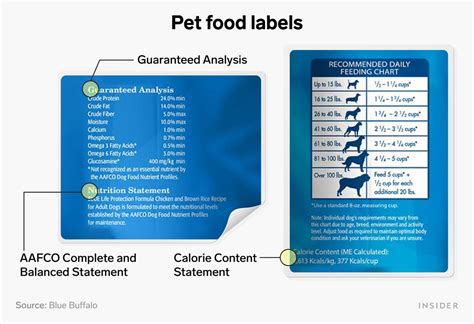Introduction
In the ever-evolving pet food industry, dog food continues to be a dominant market segment. With the growing awareness of pet health and well-being, pet owners are becoming more discerning about the ingredients and labeling practices used in dog food products. This article delves into the intricacies of dog food ingredients and labeling, providing a comprehensive guide to empower pet owners with informed decision-making.

Understanding Dog Food Ingredients
The primary components of dog food include proteins, carbohydrates, fats, vitamins, and minerals. Understanding the role and sources of these ingredients is crucial for ensuring a balanced diet for your canine companion.
Proteins
Proteins are the building blocks of tissues and organs, essential for muscle development, growth, and repair. In dog food, proteins can be derived from animal sources (e.g., chicken, beef, lamb) or plant sources (e.g., soy, corn, wheat). Animal-based proteins are considered complete proteins as they contain all the essential amino acids required by dogs.
Carbohydrates
Carbohydrates provide energy and fiber for dogs. Primary sources include grains (e.g., brown rice, oatmeal) and vegetables (e.g., carrots, sweet potatoes). Fiber aids in digestion and helps regulate blood sugar levels.
Fats
Fats provide concentrated energy and essential fatty acids for healthy skin and coat. Fats can be derived from animal sources (e.g., chicken fat, beef tallow) or plant sources (e.g., olive oil, vegetable oils).
Vitamins and Minerals
Vitamins and minerals are essential for various bodily functions, including metabolism, bone health, and immune support. These nutrients are typically added to dog food as supplements to ensure adequate intake.
Dog Food Labeling: What to Look For
Dog food labels provide valuable information about the product’s ingredients and nutritional value. Understanding label terminology is crucial for making informed choices for your pet.
Ingredient List
The ingredient list must include all ingredients in descending order by weight. The first few ingredients are typically the most abundant.
Guaranteed Analysis
The guaranteed analysis section provides information about the minimum and maximum levels of crude protein, crude fat, crude fiber, and moisture content.
Nutritional Adequacy Statement
This statement indicates whether the dog food meets the nutritional requirements established by the Association of American Feed Control Officials (AAFCO) for specific life stages (e.g., adult, puppy).
Feed Guidelines
The label should provide feeding guidelines to help determine the appropriate amount to feed your dog based on their weight and activity level.
Common Mistakes to Avoid
- Assuming “natural” means healthier: Natural ingredients do not necessarily equate to higher nutritional value.
- Focusing solely on protein content: While protein is important, a balanced diet requires a combination of nutrients.
- Ignoring the calorie content: Overfeeding can lead to obesity and associated health issues.
- Mixing different dog food brands or types: This can disrupt the animal’s digestive system.
FAQs About Dog Food Ingredients and Labeling
1. What are some healthy dog food ingredients to look for?
Fresh and whole ingredients, such as lean proteins, fruits, and vegetables.
2. What are some ingredients to avoid in dog food?
Artificial colors, flavors, and synthetic preservatives.
3. How often should I change my dog’s food?
Gradual transitions are recommended to avoid digestive upset. Consult your veterinarian for specific guidelines.
4. What are the benefits of feeding high-quality dog food?
Improved health, skin condition, and energy levels.
Market Insights: Dog Food Trends in 2025
The dog food market is projected to reach $150 billion by 2025, driven by several trends:
- Increasing pet healthcare awareness: Pet owners are prioritizing preventive care, leading to a demand for high-quality, nutritious pet food.
- Rise of premium and super-premium pet food: Pet owners are愿意to pay more for ingredients and formulations that enhance their dog’s health and well-being.
- Growing popularity of e-commerce: Online platforms offer convenience, a wider selection, and competitive pricing.
- Focus on sustainability: Consumers are becoming more conscious of environmental sustainability in pet food production.
How to Stand Out in the Dog Food Market
In a competitive market, it is essential for brands to differentiate their products and appeal to discerning pet owners. Key strategies include:
- Innovation: Introducing novel ingredients and formulations that address specific health needs or preferences.
- Transparency: Clearly communicating ingredient sourcing and manufacturing practices to build trust with pet owners.
- Emphasis on health and well-being: Focusing on the benefits of high-quality nutrition for canine companions.
- Sustainability and transparency: Implementing eco-friendly production processes and providing detailed ingredient information to meet consumer demands.
Conclusion
Dog food ingredients and labeling play a pivotal role in ensuring the health and well-being of our canine companions. By understanding the composition and labeling practices of dog food products, pet owners can make informed decisions that support their pet’s nutritional needs. As the industry evolves towards 2025, we can expect further innovation and a growing focus on premium, sustainable, and transparent pet food options.





















